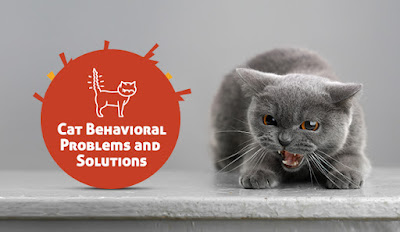When our feline pals rub against our legs, knead our laps, or purr into our eyes, we love them. But we do not always agree with our four-legged friends. Not when they rush into the house at 2 a.m. or refuse to use a spotless litter box.
The good news is that almost any common cat issue may be resolved with little assistance. That’s why we have come up with the blog with the answers to some of the most frequent feline problems.
Litter Box Problems
This is “by far” the most common problem pet parents have with their cats. It can be really frustrating when your cat decides that the litter box is off-limits. However, there is usually a reason why cats refuse to use their litter box, and there is luckily a lot you can do about it.
Consult your veterinarian first. Your cat’s refusal to use the litter box could be due to bladder stones, urinary tract infections, or urine crystals. Make an appointment with your veterinarian to rule out any of these or other health issues that your cat may be experiencing.
Urine Marking
The most prevalent behaviour issue reported by pet parents is inappropriate elimination, also known as inappropriate urination. Infections, inflammation, bladder stones, stress, and tumours are all known to cause 10% of cats to eliminate outside their litter box at some point in their lives. Conflicts between cats or other pets in the house can cause cats to get stressed, which can lead to litter box troubles. Urine marking might also be caused by your cat still being in the litter box training phase. Consult your veterinarian about training and behavioural products.
Scratching
It may appear that kitty is clawing your couch and curtains to annoy you, but they are actually doing so to relieve stress, play, establish their territory, and even get rid of frayed claws. But, there are also a few simple solutions to prevent this. So you don’t have to put up with dingy furnishings or prevent your cat from acting naturally. To prevent scratching, you can try the following solution:
- Get one or more scratching posts for your cat and coat them in catnip to encourage them to be used.
- Your cat’s claws should be trimmed. Trimming may appear daunting at first, but it’s actually a lot easier than you might expect. Get a quick tutorial from your veterinarian, who can likely complete the task in a few minutes and tell you how to do it.
Cat Aggression
A cat might become aggressive for a variety of causes, such as disease, overcrowding, a lack of socialization, maternal protection, or even plain play. Consider the following suggestions to deal with feline aggression:
- Consult your veterinarian about your cat’s hostility. While pain and disease may put anyone in a grumpy mood, you’ll want to rule out any physical causes for the kitty’s grumpiness before moving forward.
- Male cats who aren’t fixed are more prone to aggression than other cats, and it only takes one intact male to influence the behaviour of all the other cats in the house. Spaying or neutering your feline companions is a straightforward solution.
- If you and your veterinarian can’t figure out why your cat is acting aggressively, consult a veterinary behaviourist, who may be able to assist you in identifying the source of your cat’s aggression.
Excessive Licking
Cats lick themselves all the time, but persistent licking is usually caused by discomfort, stress, or worry. Excessive licking is an indication that your cat is in pain and should be treated as such. They may constantly groom other parts of their body or lick an area of their body till it is bald and raw. An excellent first step is to speak with your veterinarian or a competent behaviourist about this. Meanwhile, you can concentrate on making your cat’s habitat safer and more secure to help them cope with stress and anxiety. Make a safe location for them to go where they won’t be disturbed, or use pheromones to make them feel safe.
Bottom Line
Do not reprimand your cat if it attacks you or exhibits other violent behaviour. This simply exacerbates the problem, so ignore them completely. Reacting or fleeing may make the game more thrilling for them. Pheromones, supplements, drugs, and specific diets may all be useful in reducing undesirable behaviour. You can also provide your cat with alternative outlets for their energy, such as workout toys or catnip. Make sure to rotate them on a regular basis to keep things interesting.

No comments:
Post a Comment